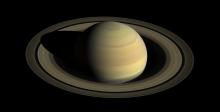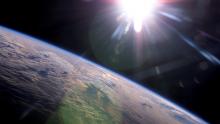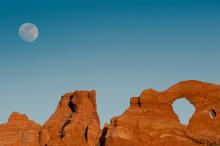Listen to today's episode of StarDate on the web the same day it airs in high-quality streaming audio without any extra ads or announcements. Choose a $8 one-month pass, or listen every day for a year for just $30.
You are here
Lahaina Noon
The Sun is moving southward now — a migration that will continue until the winter solstice, in December. For the people of Hawaii, that brings a bit of an oddity. One day this month, at local noon, the Sun will stand directly overhead. At that moment, objects like telephone poles and standing people will cast no shadows.
For the last few decades, that moment has been known as Lahaina Noon. “Lahaina” is a native Hawaiian word that means “cruel Sun” — a reference to the Sun’s intensity when it’s high in the sky.
The Sun stands directly overhead across a limited range — from the Tropic of Cancer, at 23 and a half degrees north latitude, to the Tropic of Capricorn, at 23 and a half degrees south. Hawaii is the only American state within that band, so the rest of the country misses out on the experience.
Within that geographic range, the Sun passes overhead twice per year — once as it heads north, and again when it heads south. From Hawaii, the Sun stood overhead in May. And now, it’s doing it again, working its way across the islands from north to south. It hit the northern tip of the state a few days ago. It’ll stand above Honolulu on Tuesday, Hilo on the 24th, and the southern tip of the island of Hawaii on the 28th.
A sculpture in Honolulu celebrates the event. The wavy metal structure, called Sky Gate, casts a perfectly round shadow at that moment — the moment of Lahaina Noon.
Script by Damond Benningfield





